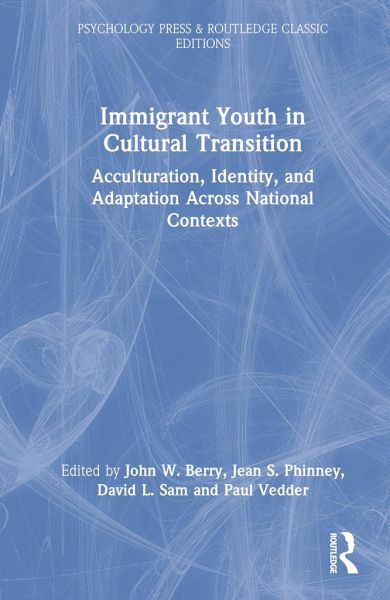
Immigrant Youth in Cultural Transition
Acculturation, Identity, and Adaptation Across National Contexts
Herausgeber: Berry, John W.; Sam, David L.; Phinney, Jean S.
Versandkostenfrei!
Versandfertig in 1-2 Wochen
168,99 €
inkl. MwSt.
Weitere Ausgaben:

PAYBACK Punkte
84 °P sammeln!
The Classic Edition of 'Immigrant Youth in Cultural Transition', first published in 2006, includes a new introduction by the editors, describing the ongoing relevance of this volume in the context of future challenges for this vital field of study. It emphasizes the importance of continued actions and policies to improve the quality of interactions between multiple ethno-cultural groups, and highlights how these issues have developed the field of cross-cultural psychology. In the original text, an international team of psychologists with interests in acculturation, identity, and development de...
The Classic Edition of 'Immigrant Youth in Cultural Transition', first published in 2006, includes a new introduction by the editors, describing the ongoing relevance of this volume in the context of future challenges for this vital field of study. It emphasizes the importance of continued actions and policies to improve the quality of interactions between multiple ethno-cultural groups, and highlights how these issues have developed the field of cross-cultural psychology. In the original text, an international team of psychologists with interests in acculturation, identity, and development describes the experience and adaptation of immigrant youth, using data from over 7,000 immigrant youth from diverse cultural backgrounds and national youth living in 13 countries of settlement. They explore the way in which immigrant adolescents carry out their lives at the intersection of two cultures (those of their heritage group and the national society), and how well these youth are adapting to their intercultural experience. It explores four distinct patterns followed by youth during their acculturation: *an integration pattern, in which youth orient themselves to, and identify with both cultures; *an ethnic pattern, in which youth are oriented mainly to their own group; *a national pattern, in which youth look primarily to the national society; and *a diffuse pattern, in which youth are uncertain and confused about how to live interculturally. The study shows the variation in both the psychological adaptation and the sociocultural adaptation among youth, with most adapting well. This Classic Edition continues to be highly valuable reading for researchers, graduate students, and public policy makers who have an interest in public health, psychology, anthropology, sociology, demography, education, and psychiatry.














